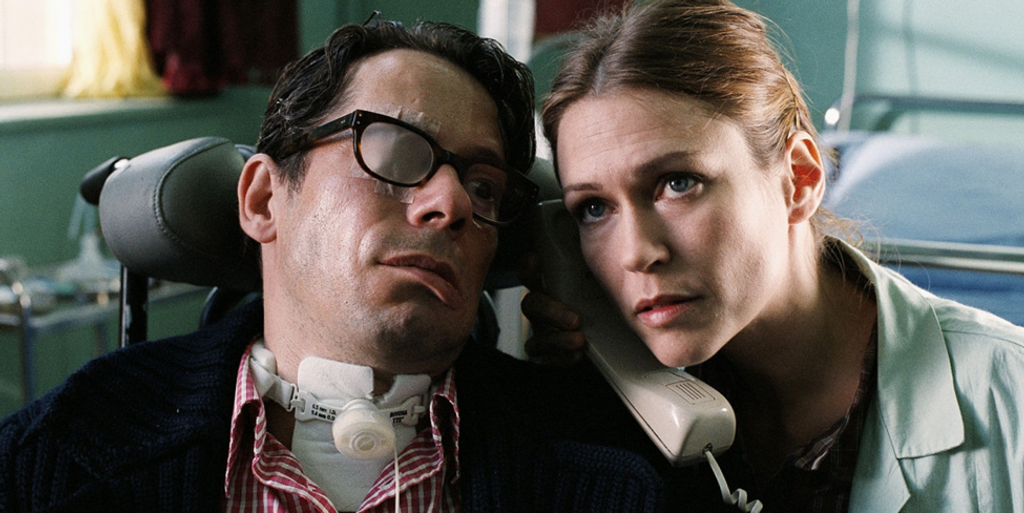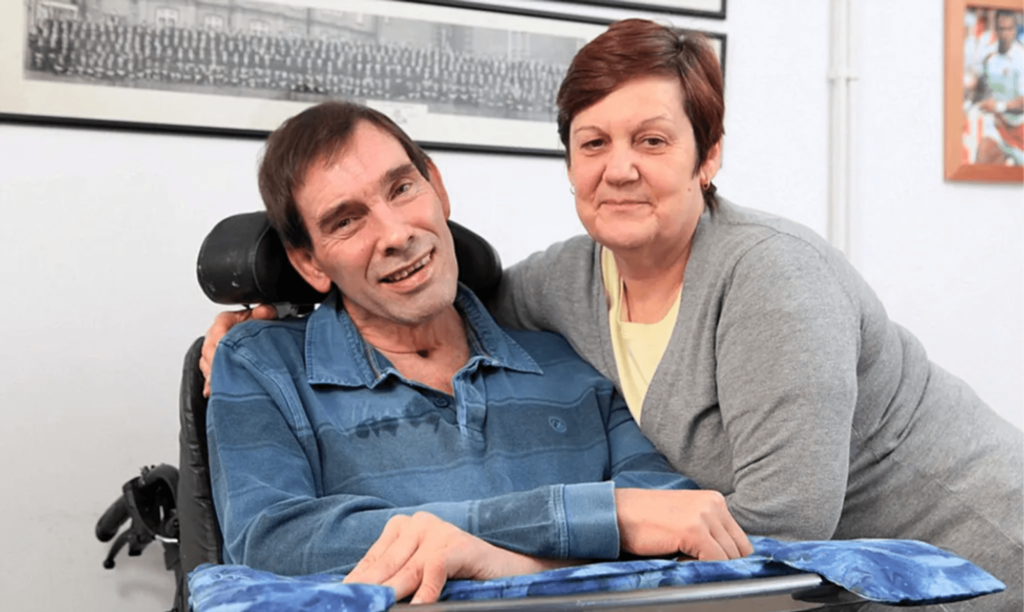Two days after regaining consciousness from a massive stroke, Richard Marsh lay helplessly in his hospital bed as doctors asked his wife, Lili, whether they should turn off his life support machine. Marsh, a former police officer and teacher, strongly opposed that suggestion. The 60-year-old didn’t want to die. He wanted the ventilator to stay on. He was determined to leave the intensive care unit and wanted everyone to know.
But Marsh couldn’t communicate his wishes. The medical team believed he was in a persistent vegetative state, devoid of mental consciousness or physical feeling. Nothing could have been further from the truth. Marsh was aware, alert, and fully capable of feeling every touch.
“I had full cognitive and physical awareness,” he said. “But an almost complete paralysis of nearly all the voluntary muscles in my body.”
Locked-In Syndrome: The Initial Signs of Recovery
The first sign of Marsh’s recovery was a twitch in his fingers, which eventually spread through his hand and arm. He felt immense accomplishment at being able to scratch his nose again. The reasons behind his remarkable recovery remain a mystery, as the majority of locked-in syndrome victims do not recover.
“They don’t know why I recovered because they don’t know why I had locked in in the first place or what to do about it,” Marsh said.
“Many doctors and medical experts I saw didn’t know what locked-in was. If they did know anything, it was usually because they’d had a paragraph about it during their medical training. No one knew anything.”
The Agony of Awareness
Marsh has never publicly spoken about his experience until now. In an exclusive interview with the famous news platform, he provided a rare and detailed insight into what it is like to be “locked in.”
“All I could do when I woke up in ICU was blink my eyes,” he remembered. “I was on life support with a breathing machine, with tubes and wires on every part of my body, and a breathing tube down my throat. I was in a severe locked-in state for some time. Things looked pretty dire.”
“My brain protected me – it didn’t let me grasp the seriousness of the situation. It’s weird, but I can remember never feeling scared. I knew my cognitive abilities were 100%. I could think, hear, and listen to people but couldn’t speak or move. The doctors would stand at the foot of the bed and talk like I wasn’t in the room. I just wanted to holler: ‘Hey people, I’m still here!’ But there was no way to let anyone know.”
A Rare Glimmer of Hope
Locked-in syndrome affects around 1% of people who have a stroke. It is a condition with no treatment or cure, and it is extremely rare for patients to recover any significant motor functions. About 90% die within four months of its onset.
Marsh had his stroke on May 20, 2009. Astonishingly, four months and nine days later, he walked out of his long-term care facility. Today, he has recovered 95% of his functionality; he goes to the gym daily, cook’s meals for his family, and recently bought a bicycle, which he rides around Napa Valley, California, where he lives.
But he still weeps when he remembers watching his wife tell the doctors that they couldn’t turn off his life support machine.
“The doctors had just finished telling Lili that I had a 2% chance of survival, and if I should survive, I would be a vegetable,” he said. “I could hear the conversation, and in my mind, I was screaming ‘No!'”
Breaking the Silence

Locked-in syndrome is less unknown than it once was. The 2007 film “The Diving Bell and the Butterfly,” based on the autobiography of Jean-Dominique Bauby, brought awareness of the condition to the general public for the first time. Then, in June, Tony Nicklinson challenged the law on assisted dying in England and Wales, bringing more attention to the syndrome.
Marsh, however, did something almost unheard of: he recovered. On the third day after his stroke, a doctor peered down at him and uttered the longed-for words: “You know, I think he might still be there. Let’s see.”
The moment the doctor discovered Marsh could communicate through blinking was a profound relief for Marsh and his family, although his prognosis remained critical.
“You’re at the mercy of other people to care for your every need, and that’s incredibly frustrating, but I never lost my alertness,” he said. “I was completely aware of everything going on around me and to me right from the very start, unless when they had me medicated.”
“During the day, I was lucky: I never spent a single day when my wife or one of my kids wasn’t there. But once they left, it was lonely – not in the way of missing people but the loneliness of knowing there’s no one there who understands how to communicate with you.”
Nighttime Vulnerability
Marsh’s only way to sleep was to be medicated. That, however, only lasted four hours, after which there had to be a three-hour pause before the next dose could be administered.
In response to a question about his hospital care, while the staff did not think he was conscious, Marsh said: “The staff who work at night were the newest and least skilled, and I was totally at their mercy. I felt very vulnerable. I did get injured a couple of times with rough handling, and that always happened at night. I knew I wasn’t in the best of care, and I just counted the minutes until I would get more medicine and sleep.”
In response to another question about the right-to-die debate, Marsh said he has no opinion. He will say, “I understand the despair and how a person would reach that point.” But he is co-writing a book that he hopes will inspire hope and provide information to victims of locked-in syndrome and their families.
“When they told my family I was probably locked in, they tried to find information online – but there wasn’t. One of my goals now is to change that … to be able to reach out to families who find themselves in the same situation that mine were in so they can help their loved ones.”
A Beacon of Hope
“Time goes by so slow … It just drags by. I don’t know how to describe it. It’s almost like it stands still.
“It’s a terrible place to be, but there’s always hope,” he added. “You’ve got to have hope.”
Lessons for the Medical Community
Richard Marsh’s story is a tale of personal triumph and a crucial lesson for the medical community. The ability to distinguish between a vegetative state and locked-in syndrome is vital. The importance of thorough assessments, continuous monitoring, and a deep understanding of rare conditions cannot be overstated.
For doctors, Marsh’s experience underscores the need for humility and openness in diagnosis and treatment. It highlights the importance of considering the patient’s perspective and the potential for unexpected recoveries. The story also calls attention to the necessity of improved training and awareness among medical professionals about rare neurological conditions.
Moving Forward
As Marsh continues to share his story, he aims to bring hope to others affected by locked-in syndrome and their families. His upcoming book seeks information and inspiration, filling the gap he and his family experienced when facing this daunting diagnosis.
Marsh’s journey from the brink of death to a vibrant life inspires doctors and patients alike. In a world where medical miracles are rare, Marsh’s experience reminds us of the profound impact of hope, determination, and the unwavering support of loved ones. His story encourages the medical community to look beyond the apparent, strive for deeper understanding, and never underestimate the human spirit’s resilience.
Disclaimer Statement: This information is from a third-party health news channel. The opinions expressed here belong to the respective authors/entities and do not reflect the views of Docquity. Docquity does not assure, endorse, or vouch for any of the content and bears no responsibility for it in any way. It is essential to take all necessary steps to ensure the information and content provided are accurate, current, and verified. Docquity disclaims any express or implied warranties related to the report and its contents.
References
Locked-in syndrome: rare survivor Richard Marsh recounts his ordeal [Internet]. Accessed on June 27, 2024. Available from : https://www.theguardian.com/world/2012/aug/07/locked-in-syndrome-richard-marsh
About Docquity
If you need more confidence and insights to boost careers in healthcare, expanding the network to other healthcare professionals to practice peer-to-peer learning might be the answer. One way to do it is by joining a social platform for healthcare professionals, such as Docquity.
Docquity is an AI-based state-of-the-art private & secure continual learning network of verified doctors, bringing you real-time knowledge from thousands of doctors worldwide. Today, Docquity has over 400,000 doctors spread across six countries in Asia. Meet experts and trusted peers across Asia where you can safely discuss clinical cases, get up-to-date insights from webinars and research journals, and earn CME/CPD credits through certified courses from Docquity Academy. All with the ease of a mobile app available on Android & iOS platforms!







